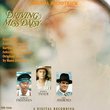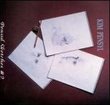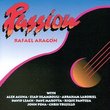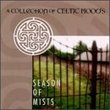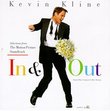| All Artists: Phantasm, director Laurence Dreyfus Title: Gibbons: Consorts for Viols /Phantasm Members Wishing: 0 Total Copies: 0 Label: Avie Original Release Date: 5/24/2004 Release Date: 5/24/2004 Genres: Special Interest, New Age, Classical Styles: Instrumental, Opera & Classical Vocal, Chamber Music, Historical Periods, Early Music Number of Discs: 1 SwapaCD Credits: 1 UPC: 822252003222 |
Search - Phantasm, director Laurence Dreyfus :: Gibbons: Consorts for Viols /Phantasm
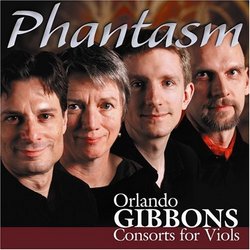 | Phantasm, director Laurence Dreyfus Gibbons: Consorts for Viols /Phantasm Genres: Special Interest, New Age, Classical A 2004 Gramophone Award winner! "Laurence Dreyfus, the leader of Phantasm, has the unique ability to communicate his enthusiasm for the music he performs ... there are [many] pieces here which deserve to be considered mast... more » |
Larger Image |
CD DetailsSynopsis
Album Description A 2004 Gramophone Award winner! "Laurence Dreyfus, the leader of Phantasm, has the unique ability to communicate his enthusiasm for the music he performs ... there are [many] pieces here which deserve to be considered masterpieces." (Musicweb-International) Similarly Requested CDs
|
CD ReviewsA New Kind of Ensemble B. Porter | Whittier, CA United States | 04/09/2005 (5 out of 5 stars) "The CD, Consorts for Viols was put out on the Avie label and made possible by Magnatune. The performers are the viol quartet Phantasm and two guest artists, Susanna Pell and Asako Morikawa. The viol, in its nature, is a chamber instrument. It is not unlike the cello, yet its differences are pronounced when one takes a close look at the two instruments. The viol has a rounder shape than the cello and has six strings instead of four. The playing techniques of the instruments are different. One of the most pronounced differences is in the way the bow is held. On a cello the bow is held with the strings facing downwards and the player's hand is at the very end of the bow. The viol's bow strings, on the other hand, face upwards and the player's hand is positioned somewhere near the end but closer to the middle. Because of its internal makeup, the viol has been considered only suitable for chamber music. Phantasm is definitely such an ensemble; yet the way their instruments are projected on the recording, the listener is forced to think of the viol as capable of something more. Phantasm, on their recent release Consorts for Viols, play a wide variety of music by the English composer Orlando Gibbons. They begin with the Fantasias. A fantasy, or fantasia, is an work with an improvisational quality that is spun out of a theme or motive. The first fantasia that Phantasm plays is Fantasia V. It has a quick, lively beginning then slows down to sober, sliding notes and returns again to a mood like the beginning one. Fantasia VI features solo entries in all the viols and then a dialogue- like section between the tenor and bass. Fantasia III is especially noted for the interweaving counterpoint in its middle. This characteristic can be seen to a certain degree in all of the music on this recording and definitely proves Gibbons's outstanding ability in choral music in which one can hear counterpoints of all kinds interwoven in the vocal parts. All six fantasias are played as well as the four fantasies that are heard later on the CD. The fantasies are very fugal in character. The fugue was rather a new, innovative genre during Gibbons's time. A fugue features a subject stated solo followed by the subject restated in all of the other voices whilst each voice, after it states the subject, continues on with free material. The subject of Gibbons's Fantasy I is composed of long, repeated notes. A second theme seems to appear in the middle of the work that is characterized by upwards rising notes. This is similar to the ricercar, a kind of fugue that would have been popular during Gibbon's day; it was used mainly for liturgical purposes and featured more than one subject. Fantasy III's theme is so characteristic of the rhythmic tendency during the Renaissance with its short-long beat. Fantasy IV has a rather regal theme stated solo in the tenor, and the middle of this piece features falling arpeggio's. After the Fantasies, come two anthems originally written for chorus but which Phantasm plays on viols. The second, Hosanna to the Son of David has upwards scales in it. These were probably meant as word painting for the text "Hosanna in the highest". Phantasm does a good job of evoking the mood of an organ and singers that would have normally been used for these anthems. Two popular tunes used as a ground bass for variations are Go from my Window and Peascod Time, originally written as virginal music. Gibbons's writing in these two pieces can be technically challenging, but the violists of Phantasm tackle it with great clarity and distinctness of line. Both tunes have a country sound reflecting their ground basses. Special mention must be made about the Salisbury Pavan. This pavan was originally written by Gibbons's for the virginal, and in it he placed one note that went just a little too low for that instrument.(The note was AA; virginals generally went to C.) This song incited the expansion of the range of the virginal. Since that time, the range of the keyboard has continued to be expanded through adventuresome composers taking - as we may think of it - the lead from Orlando Gibbons. In the booklet notes, Laurence Dreyfus, the director, specifically mentions that this work and its "excruciatingly expressive" dissonances are "so beloved of Glenn Gould". This is not the only time he mentions the Canadian pianist. Again, he writes of Gould's praise of Gibbons's anthems and how he wore out three recordings of those works. He states that viol players and Glenn Gould do have something in common. The clarity with which the performer's of Phantasm bring out the complex lines of Gibbons's music is exemplary. They are able to create a structural sense of rhythm without having a clear meter, especially in the Fantasias and Fantasies. Technically they keep a clean sound, and musically they bring out the lines of the phrase structures. This CD won the 2004 Gramophone Early Music award, and a bonus track is available at www.magnatune.com. The words for The Silver Swan, a part-written song for voices conditioned by Phantasm for viols and played on this CD are: The silver swan, who living had no note, When death approach'd, unlock'd her silent throat; Leaning her breast against the reedy shore, Thus sung her first and last, and sung no more. Farewell, all joys; O Death, come close mine eyes; More geese than swans now live, more fools than wise. -Contrapunctus" Soothing, Energizing and Great Sounding Album Nineteen | San Francisco | 11/11/2004 (5 out of 5 stars) "I do not have a deep understanding of classical music. I usually tend to buy albums that intuitively appeal to me on the first listen. I first listened to this on British Airways' inflight classical music selection. Needless to say I can't give you a "classical" interpration of this CD. The rich sound of the viols is very relaxing and energizing at the same time. The album is very well recorded and mastered -- just a glorious soundstage and you can pin point every single move of the string on every single viol. If you are an audiophile, this is a must buy just to see how well your system can reproduce the rich sounds of the different viols. I am glad I bought this album! Highly Recommended!" A Recommendation, Not a Review Ralph Saunders | San Anselmo, USA | 02/10/2009 (5 out of 5 stars) "This is a recommendation, not a review.
I love Jordi Savall and in particular his recordings of English early Baroque music for the viol. I think Savall's recordings of Tye and Jenkins and Lawes and GIBBONS are outstanding. I have immersed myself in these (and other) recordings for long satisfying days on end. I first heard Phantasm on a recording of Jenkins's Six Part Consorts. I didn't love it. To my ear, it didn't have the same eerie depth and concentrated devotion of Savall's recording. Phantasm's recording of Gibbons is another story altogether. It is nothing short of amazing! This album rewards the close listener and the aural pond skimmer alike. The Amazon reviewer P.Porter (see above) beautifully captures the tone of this music so I won't do more than agree. Rather, the point of this recommendation is to assure even the most devoted fan of Jordi Savall and his recordings of this repertoire that Phantasm's Gibbons is a wonderful and essential set of performances that you will love." |


